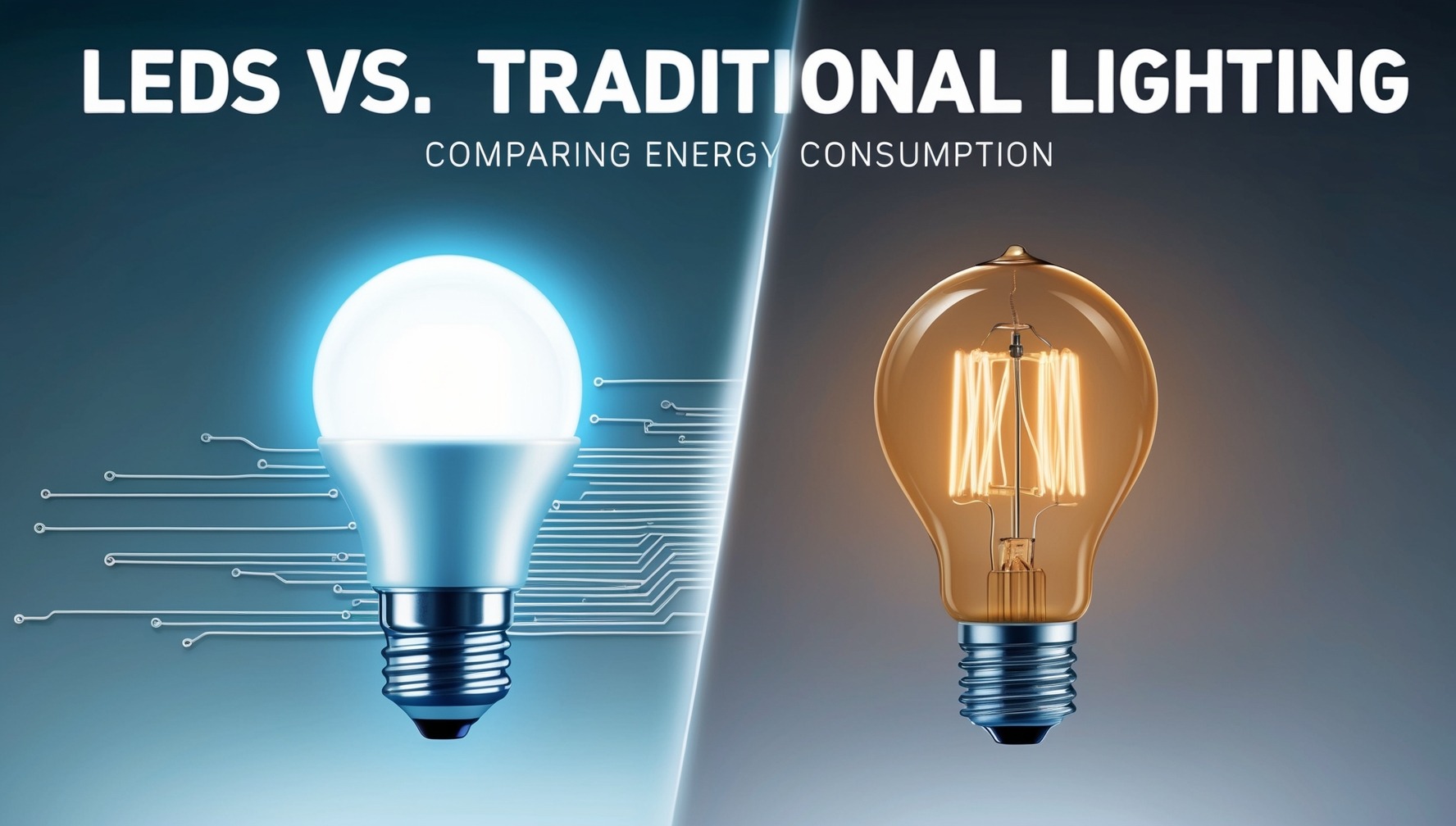As energy efficiency becomes a crucial consideration for both consumers and businesses, understanding the differences in energy consumption between LED lighting and traditional lighting options is essential. This article compares LEDs with traditional incandescent and fluorescent lighting, highlighting the significant energy savings and environmental benefits that LEDs offer. Additionally, exploring the future of energy-efficient lighting reveals how advancements in LED technology and other innovations will continue to drive sustainability and cost-effectiveness in lighting solutions.
Energy Efficiency of LEDs
LEDs, or Light Emitting Diodes, are renowned for their exceptional energy efficiency. Unlike traditional incandescent bulbs, which convert only about 10% of the energy they consume into light (with the rest lost as heat), LEDs convert nearly all of their energy into light. This high efficiency allows LEDs to use significantly less electricity to produce the same amount of light as traditional bulbs.
For example, a typical 60-watt incandescent bulb can be replaced with a 10-watt LED bulb, offering the same brightness while consuming only a fraction of the energy. This efficiency translates into lower electricity bills for consumers and businesses, making LEDs a cost-effective lighting solution in the long run.
Comparing Incandescent Bulbs and LEDs
Incandescent bulbs have been a staple in households for over a century, but their energy inefficiency is a major drawback. These bulbs operate by heating a filament until it glows, a process that requires a significant amount of energy. As a result, incandescent bulbs consume much more electricity than LEDs for the same light output.
For instance, an incandescent bulb that produces 800 lumens of light (equivalent to a 60-watt bulb) typically consumes 60 watts of power. In contrast, an LED bulb producing the same 800 lumens typically uses only 8-12 watts. This drastic reduction in energy consumption can lead to significant savings over time, especially when multiple bulbs are used throughout a home or business.
Fluorescent Lighting vs. LEDs
Fluorescent lighting, including compact fluorescent lamps (CFLs) and linear fluorescent tubes, is more energy-efficient than incandescent lighting but still falls short compared to LEDs. Fluorescent bulbs work by exciting a gas inside the bulb, which then emits ultraviolet light that is converted into visible light by a phosphor coating.
While fluorescent bulbs use less energy than incandescent bulbs, they still consume more power than LEDs. A standard CFL bulb that produces 800 lumens typically consumes around 13-15 watts, whereas an equivalent LED bulb uses only 8-12 watts. Additionally, fluorescent bulbs contain mercury, a hazardous substance that requires careful disposal, making LEDs a more environmentally friendly option.
Long-Term Energy Savings with LEDs
One of the most compelling reasons to switch to LED lighting is the long-term energy savings it offers. The lower wattage requirements of LEDs, combined with their longer lifespan, mean that they consume significantly less energy over their lifetime compared to incandescent and fluorescent bulbs.
For example, if a household replaces ten 60-watt incandescent bulbs with 10-watt LED bulbs, the energy savings would be substantial. Assuming the bulbs are used for an average of three hours per day, the LED bulbs would save approximately 550 kilowatt-hours (kWh) of electricity per year compared to the incandescent bulbs. This reduction in energy use translates directly into lower utility bills and a reduced carbon footprint.
Environmental Impact of Reduced Energy Consumption
The energy efficiency of LEDs not only benefits consumers financially but also has a positive impact on the environment. Reduced energy consumption means that less electricity needs to be generated, which in turn reduces the demand on power plants and the associated greenhouse gas emissions.
By switching to LED lighting, individuals and businesses can contribute to a significant reduction in carbon emissions, demonstrating how LED lights contribute to sustainable living. This is particularly important as the world seeks to address climate change and transition to more sustainable energy practices. The widespread adoption of LED technology is a crucial step toward achieving global energy efficiency goals and reducing environmental impact.
Cost Considerations and Payback Period
While LEDs have a higher upfront cost compared to traditional incandescent or fluorescent bulbs, their long-term energy savings and durability make them a cost-effective choice. The payback period for switching to LEDs is typically short, often just a few months to a couple of years, depending on usage and energy costs.
Once the initial investment is recouped through energy savings, LED users continue to benefit from lower electricity bills and reduced maintenance costs, as LEDs last much longer than traditional bulbs. This makes LEDs not only an environmentally responsible choice but also a financially sound investment.
Conclusion: The Clear Advantage of LEDs
When comparing the energy consumption of LEDs to traditional lighting options, the advantages of LEDs are clear. With their superior energy efficiency, longer lifespan, and lower environmental impact, LEDs are the best choice for anyone looking to reduce energy use, save money, and contribute to a more sustainable future. As we look towards the future of energy-efficient lighting, LEDs are poised to play a pivotal role. With continuous advancements in technology, LED lighting will not only enhance energy savings but also further revolutionize the lighting industry.
